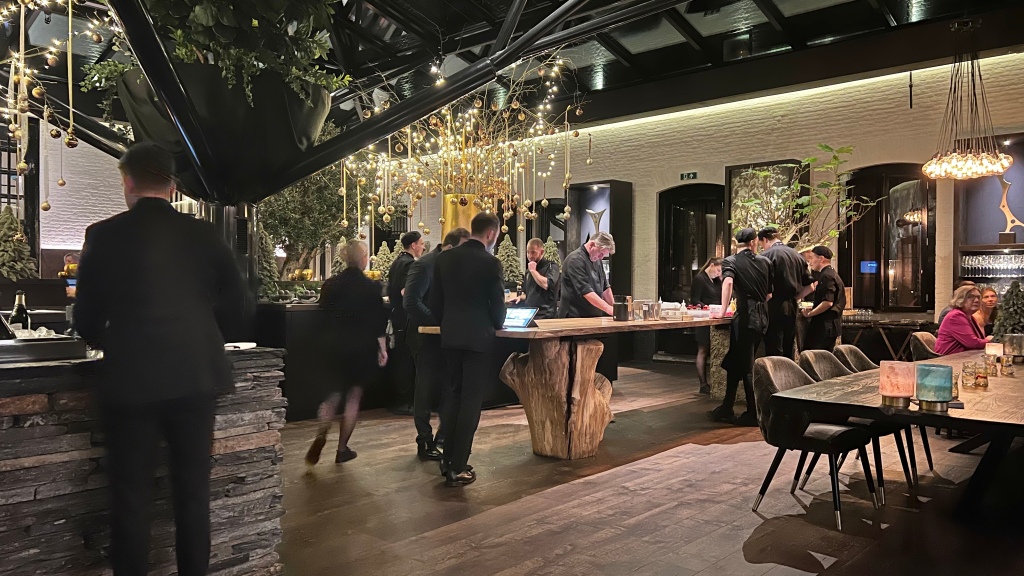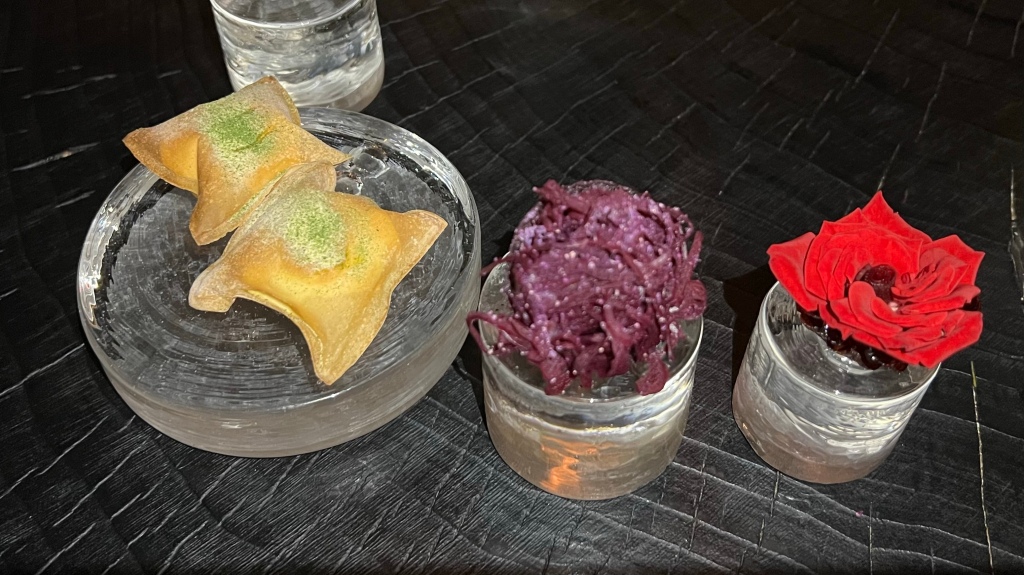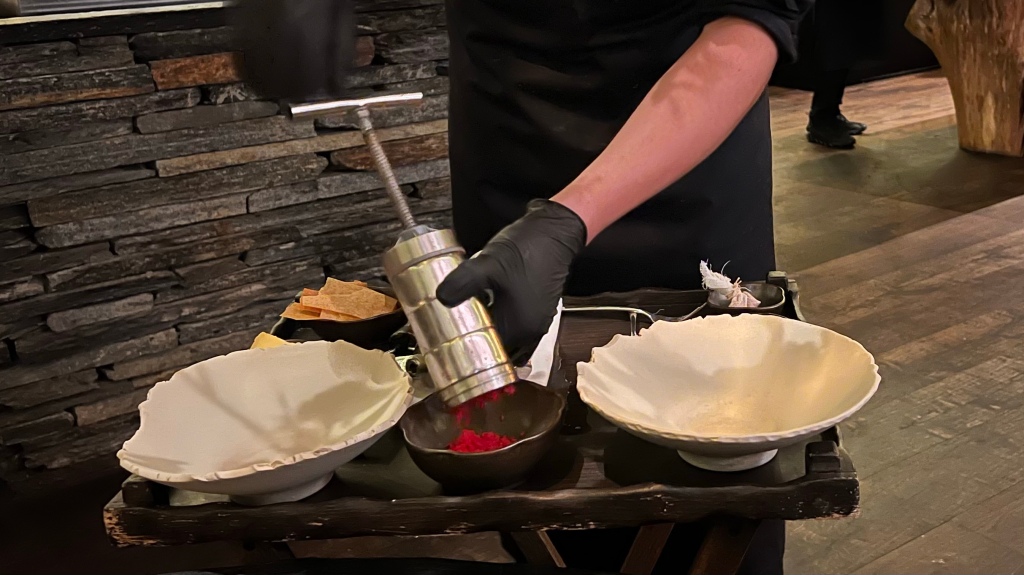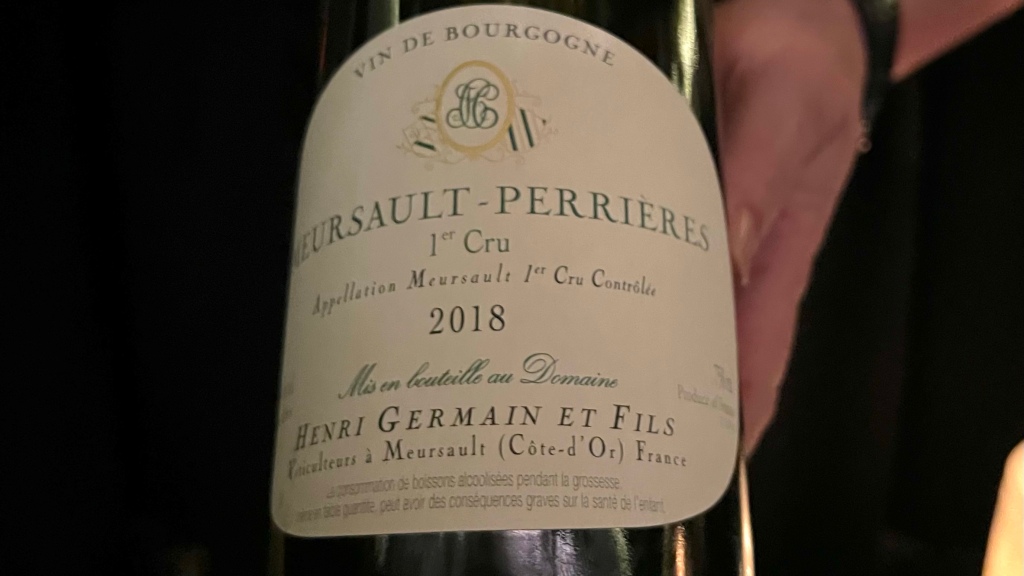
The Librije by Jonnie & Thérèse Boer has been around since 1993 and received its first Michelin star right after it started. The third star was awarded in 2004 and they have kept the three stars since. Now that maître Gert Wiltvank has been awarded the master host title by the SVH (the Dutch education trust for proficiency in hospitality), it is the only restaurant in the Netherlands with three SVH masters (Jonnie is master chef, and Thérèse is both master host and master sommelier). Since 2005, we have celebrated our anniversary every year with a dinner at Librije and for me it has become the benchmark for a three star Michelin restaurant in terms of food, wine (pairing), and hospitality. In 2005 it was the first three star restaurant we dined at, but in the meantime we have been to three star restaurants all over the world and we have found that very few offer the same level of hospitality.

A nice improvement this year is that Librije now offers a “high end” wine pairing (295 euros) with the 8-course tasting menu (295 euros), next to the regular wine pairing (125 euros). Since for me wine is as important as the food, it is great that a wine pairing of the same price level as the food is now available, like at Aqua, Ciel Bleu, or 212.

We start with a nice Grand Cru Champagne by Pierre Péters, blanc de blancs, so 100% Chardonnay, with 40% “réserve perpetuelle” from more than 20 different vintages.

The first set of amuses bouches includes an edible rose with beetroot and lovage, red cabbage with orange and bell pepper, and a crispy pillow with magnolia, carrot, and ginger. The pillow is very delicate and melts on your tongue but is still crispy, magnificent.

The second set of amuses bouches showcases three of Librije’s suppliers, and this quarter they are oysters from Oesterij, crayfish from Lokriet, and Dutch passion fruit (served with salmon roe that looks like part of the passion fruit) from Dutch Wasabi.

It goes without saying we opted for the “high end” wine pairing, which started with a 2013 Dönnhoff Grosses Gewächs Felsenberg Riesling from the Nahe in Germany. Grosses Gewächs is the German equivalent of a Grand Cru and this is a beautifully aged Riesling with great balance, complexity, and elegance.

It paired very well with the foie gras with Dutch shrimp and tomato, that was served with a brioche dipped in a very dark shrimp bisque on the side. The dish was a new version of last year’s dish, with if I remember correctly slightly more tomato and slightly less lime. Even though the Riesling was dry, it had enough power to handle the creamy foie gras.

Jonnie loves langoustine ‘ceviche’ made with kombucha as the acid, and this time it was a lemongrass kombucha. The langoustine had perfect texture and was served with ginger, mushrooms, and very thinly sliced cauliflower. It was amazing how the same Riesling turned into a completely different wine with this dish, accentuating the freshness of the wine rather than the creaminess as with the previous dish.

The next wine was 2021 Saumur Les Chapaudaises by Brendan Stater-West, a Chenin Blanc from the Loire Valley in France with a good balance and nice aromas of bees wax.

The next dish was water melon, served as steak tartare by removing most of the water from it.

It was served with piccalilly, baharat spices, and thin potato crisps. As the water melon was obviously sweet, the dish only worked with the wine when eaten together with the refreshing piccalilly.

With the next wine we were moving more into the “high end”, with a 1er Cru Meursault-Perrières by Henri Germain. Wonderful balance, complexity, and minerality, creamy yet elegant.

The first dish with this wine was cheek of ray with crispy kale and dry sausage. The contrast between the succulent cheek and the crispy kale was very nice.

Next was the Librije signature dish, which was already on the menu in 1993: pikeperch with apple syrup and soy sauce, bacon, Riesling sauce, celery, and crispy potato. A good pairing with the Meursault, although this year the amount of apple syrup seemed slightly higher than other years (the dish is prepared table side) and the Meursault could only just handle the sweetness.

For the main course there were two Cabernet Sauvignon wines that were first served blindly and then revealed to be a 2010 Alter Ego, the second wine of Château Palmer in Margaux, Médoc, France, and a 2014 Parker Terra Rossa First Growth from Coonawarra, Australia. Both great wines, beautifully aged with velvety tannins and nice freshness. The Alter Ego had a more complex aroma, whereas the Australian wine had the characteristic hint of eucalyptus.

They were both a great pairing with the hare fillet with “royal” sauce and radicchio. The flavor of the hare with sauce was strong but nicely balanced. The Australian Cabernet was a slightly better pairing because it was more fruit forward than the Médoc, and thus worked better with the gamey flavor of the hare.

We decided to add a selection of Dutch cheeses to the menu and asked to select a pairing of wine and cheese.

Rather than picking one style of wine with one style of cheese, the sommelier came up with three wines: a 2021 Keller Riesling Kabinett from Rheinhessen, Germany, a 2007 Boal Madeira by Barbeito, and a 2000 Vintage Port by Quinte do Passadouro.

All three very nice wines.

The Riesling was a good pairing for the soft cheeses, the Madeira for the hard cheeses, and the port for the blue cheeses.

Both desserts were to be paired with a 1996 Château de Fargues Sauternes, nicely aged with an aroma of saffron.

The first dessert was a remarkable combination of dark chocolate with rum and shrimp bisque. I remember the flavor very well, because getting strong bisque in a dessert is not easy to forget. But I don’t remember very well what happened after, because at this point the alcohol suddenly hit me and I had a hard time staying upright. This was probably an interaction between the wine (I usually know how to pace myself but when the wine is this good, it becomes harder to do so) and the pain medication I was on for my lower back. So Kees decided we should go to our room instead of having the second dessert. That was probably a good idea, because I don’t remember much between the shrimp bisque dessert and waking up the following morning. Without a hangover, strangely enough. So unfortunately I can’t tell you about the second dessert (with honey made at the hotel, mandarin, pear, and apple) and the friandises.
This was another great dinner at Librije. As every year, we’ve already made the reservation for next year! The only drawback of going here every year (and last year even twice because the dinner from the year before had be postponed due to Covid) is that quite a lot of dishes were the same or similar to those enjoyed at our previous visits.


Incredible! I love that beautiful table topped with Dutch cheeses!
LikeLiked by 1 person
Wow! Christmas Day morning here – this wondrous share was not an extra Yule ‘gift’ I expected to receive! Exciting as always and just beautifully plated! Love the new photo of you too . . . that is a yearly celebration, is it not? Enjoy . . . and have a great Christmas . . . .E
LikeLiked by 1 person